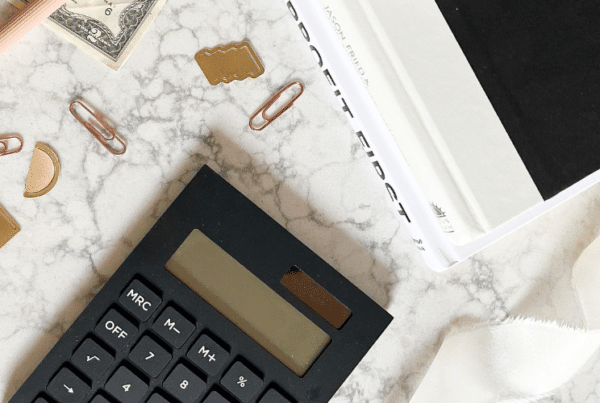If your income is over the threshold allowed to open or fund a Roth IRA, then today’s post is for you! I’ll explain how you can get around this problem with a strategy called “backdoor Roth IRA.” And don’t worry; everything in this article is on the up and up.
Who can use the backdoor Roth IRA strategy?
Since the IRS sets income limits for contributing directly to a Roth IRA, this strategy is for high-earners and works best if you don’t have any other traditional IRAs.The income phase-out range for Roth IRA contributions in 2023 are:
- $138,000 to $153,000 for singles and heads of household,
- $218,000 to $228,000 for married couples filing jointly, and
- $0 to $10,000 for married individuals filing separately.
How does the backdoor Roth IRA strategy work?
To employ this strategy, you’ll first make a contribution (likely nondeductible due to your income level) to a traditional IRA. This means you’ll be contributing after-tax money to the traditional IRA. Next, you’ll convert that traditional IRA into a Roth IRA. You can also withdraw all or part of the money from your traditional IRA and reinvest that money into a Roth IRA within 60 days of the withdrawal.
Additionally, if you have a 401(k) plan through your company that allows conversions, you might be able to roll that account over to a Roth IRA.
Why would I want to use the backdoor Roth IRA strategy?
Having a Roth IRA allows you to contribute pre-tax money to a retirement account that can continue to grow tax-free until you’re ready to use the money in retirement. This is a big advantage because unless pigs start flying, we know that taxes will be higher in the future, so you pay the lower tax rate now. You also won’t be charged any taxes or penalties when you’re ready to withdraw your money after age 59½, which is not the case with traditional IRAs.
Another benefit of having a Roth IRA is that you won’t have to deal with required minimum distributions (RMDs), so you can continue to grow your money indefinitely. This also gives you the freedom to withdraw however much you want whenever you want (again, without penalty after age 59½).
Finally, if you know you’ll still have money in your account when you die, and you want to pass that money onto heirs, then a Roth IRA is the way to go. Even though there are some specific tax rules for inherited IRAs, a Roth IRA allows the most flexibility and allows you to give mostly tax-free money to your heirs.
What taxes will I have to pay on my contributions to a backdoor Roth IRA?
Depending on when you make the conversion, you may have little or no tax assessed for the move. If you make these conversions correctly, you’ll also avoid the 10% additional tax for early distributions.
One thing to note is that some or all of your distributions from the traditional IRA may be subject to income taxes depending on whether you received a tax deduction on the initial contribution in a previous year. For instance, if you convert a traditional IRA into a Roth IRA and you already received a tax deduction for that contribution in a previous year, then you will owe income taxes on the entire amount that you converted from the traditional IRA to the Roth IRA. You’ll also have to pay income taxes on any earnings you made in the traditional IRA account.
On the other hand, if you convert a traditional IRA into a Roth IRA and you did not receive a tax deduction for that contribution in a previous year, then you will only owe income taxes on any earnings your converted money makes as long as you don’t have any other traditional IRAs.
Additionally, money that you move into a Roth IRA from a traditional IRA is called “converted funds” and not “contributions.” This difference means that if you’re under age 59½, you’ll need to wait five years before withdrawing your money unless you want to pay a penalty.
Just keep in mind that no matter how you’re converting the money into a Roth IRA, you’ll only pay taxes on that money one time.
Can I convert my Roth IRA money back into a traditional IRA?
If you’ve converted funds from a traditional IRA into a Roth IRA anytime after December 31, 2017, you cannot then convert those funds back into a traditional IRA.
Can I convert Required Minimum Distributions (RMDs) from my traditional IRA into a Roth IRA?
No.
Is the backdoor Roth IRA strategy legal?
Yep!
Should I use the backdoor Roth IRA strategy?
Whether or not this strategy is right for you depends on many financial factors, so I suggest speaking to your accountant or financial advisor about your best course of action. If your income is over the IRS thresholds for contributing to a Roth IRA, the backdoor Roth IRA strategy is definitely something to consider if you are comfortable paying more taxes now in order to lower your tax burden later in life.
And if you own an S-corporation, be sure to read my post about all of the retirement options available to you.



